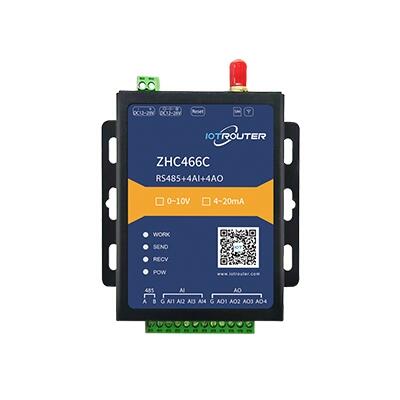
Analog module
The analog module is also called an analog collector or analog acquisition module, and is often used to collect sensor data. For example, the analog module of Zongheng Intelligent Control supports the collection of 4~20mA and 0~20mA. It supports AO remote following AI, and also has special functions such as local logic operations, active data collection and reporting, and wet and dry node detection. In other fields, there are also many aspects of collection functions, control functions, display functions, remote management functions, alarm functions, and storage functions. The collection function is to collect standard signals of pressure, temperature, displacement, and other transmitters; collect flow data of flow meters and pulse meters; collect the operating status of water pumps or valves, equipment power supply status, and door opening and closing status.
Basic functions of analog module
◆Multiple networking methods, supporting one-to-one networking and one-to-many networking;
◆AO follows AI remotely,
◆Active reporting, supports active collection of sensor data, 4~20mA active reporting;
◆Master, slave mode, master mode
◆Supports RS485 cascading multiple devices for cloud forwarding, cloud networking local logic, and inter-device logic
◆Network registration package, heartbeat package, hardware watchdog
◆Remote configuration, remote upgrade of host computer, web page data triggering, scheduled reporting
Analog module related applications
1. Temperature Sensor
Smart home temperature control systems can use temperature sensors to monitor indoor temperature in real time and automatically adjust air conditioning or heating equipment to maintain a comfortable environment.
2. Humidity Sensor
In agricultural monitoring systems, humidity sensors can monitor soil moisture to help farmers decide when to irrigate and improve the efficiency of water use.
3. light sensor
Intelligent lighting system utilizes light sensors to detect the ambient light intensity and automatically adjusts the brightness of indoor lights, thus saving energy.
4. pressure sensors
Weather monitoring stations use pressure sensors to collect barometric pressure data, which is used in conjunction with temperature and humidity information to predict weather changes.
5. acceleration sensor
In wearable devices, acceleration sensors monitor the user’s movement status to help with health tracking and activity analysis.
6. Ultrasonic Sensors
Smart parking systems utilize ultrasonic sensors to detect the occupancy of parking spaces and update parking information in real time, reducing the time spent searching for a parking space.
These analog modules enable various IoT applications to achieve intelligent management and automated control by collecting and transmitting important data.